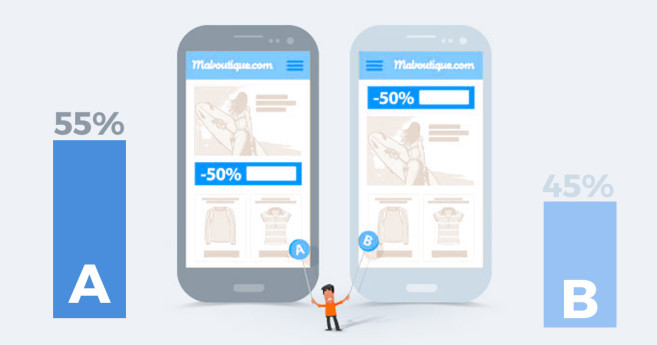Split Testing is a solution for carrying out A/B tests.
By comparing several versions of your web pages, such as your landing pages or home pages, a split test helps you identify which one has a better conversion rate for your visitors.
When the split test is launched, your pages’ traffic is randomly spread over the different versions of your pages. Each one’s performance is tracked and analysed by the split testing software to identify the version that converts the best, with the highest significance. Split testing determines the version on which the sample converted the best.

To understand why your visitors aren’t converting, it is important to ask yourself which content is keeping your visitors from converting. Your intuition isn’t enough; what matters is the product’s effect on your visitors.
By performing a split test, you put your visitors at the heart of your decision-making process. On the one hand, the results obtained from split testing will help you know which page version they interact with the most, and, on the other hand, which information and design transforms them into repeat customers.
Split tests promise qualitative feedback on user experience to help you identify barriers and optimise your conversion tunnel.
Contrary to A/B testing, which works directly from our AB Tasty software, split testing hosts the different versions on distinct URLs. Split testing therefore requires intervention from your technical team.
And where A/B testing uses changes that are close to the original, split testing is used where the new version’s page design and content are significantly different from the original.
Split testing is very useful in making major design changes in your website. For example, if you’re thinking about completely changing your home page’s design, split testing is the ideal tool to help you optimise conversions.
But in testing a radically different version of your website, you will obviously make fundamental changes that require back-end operations that your marketing teams cannot make. Split testing, which require technical teams to intervene, remains the best testing solution when the elements changed come from back-end changes.